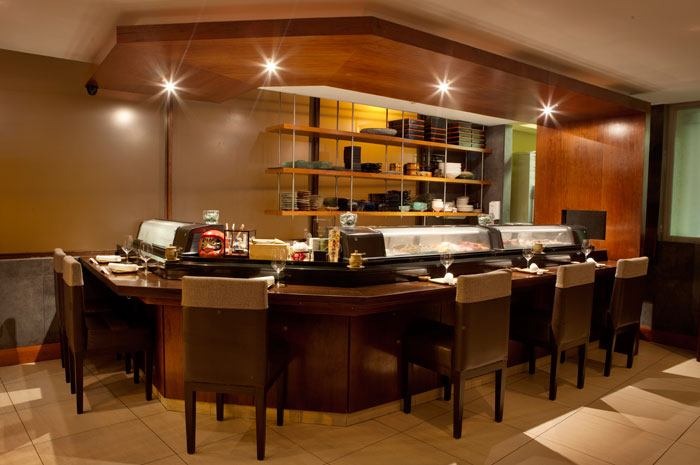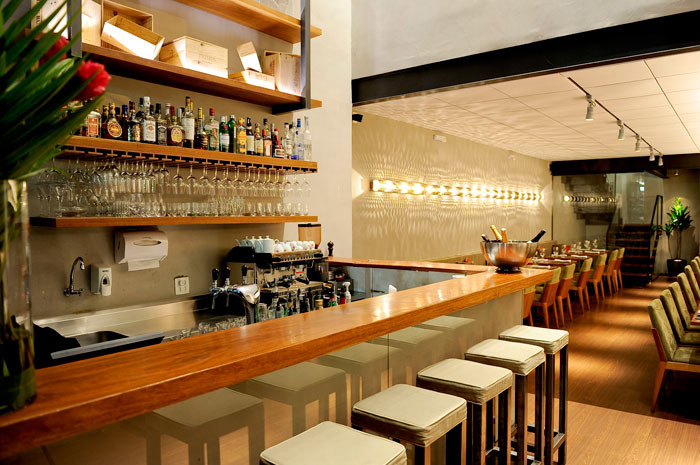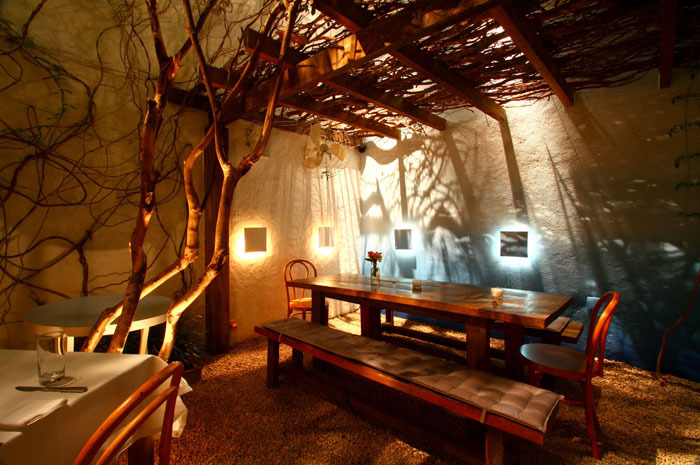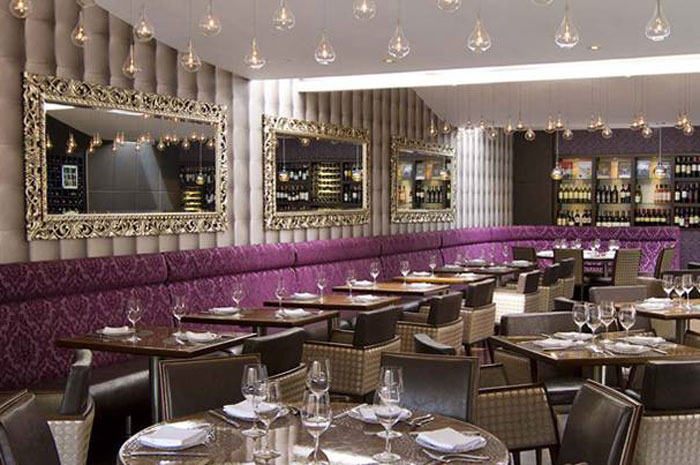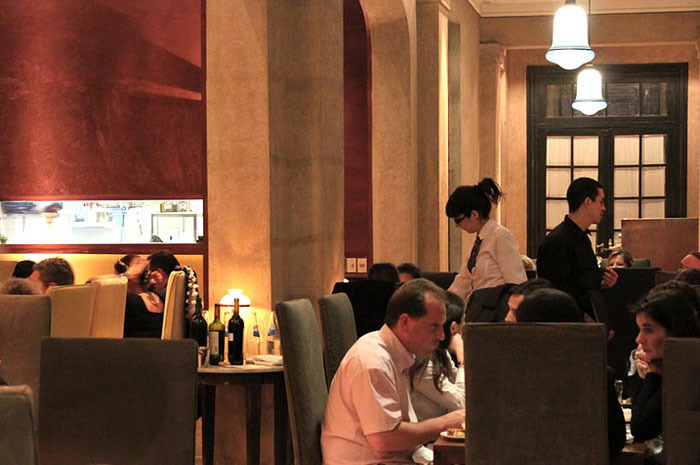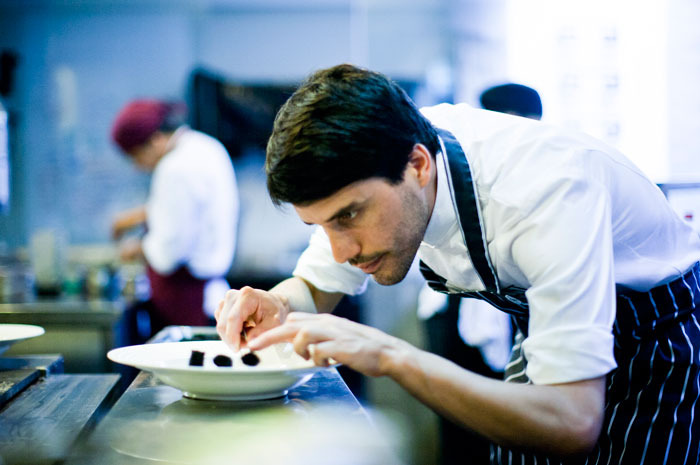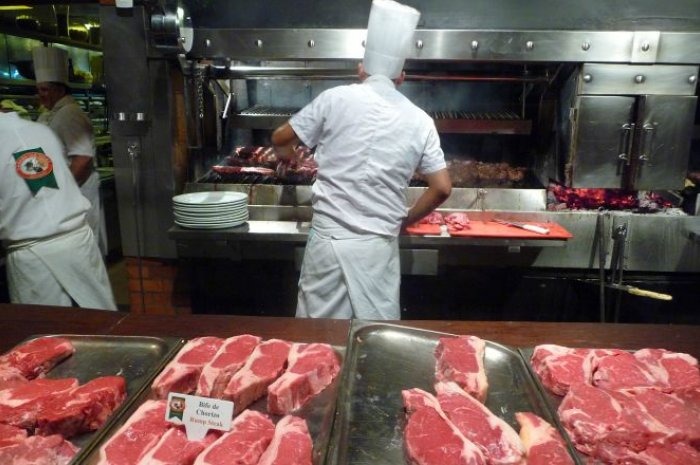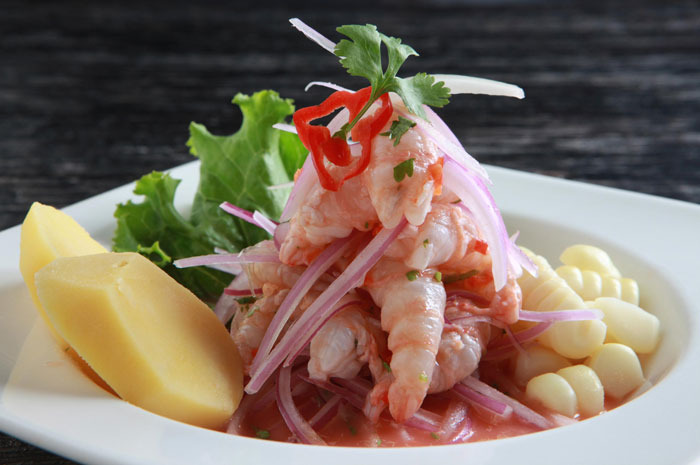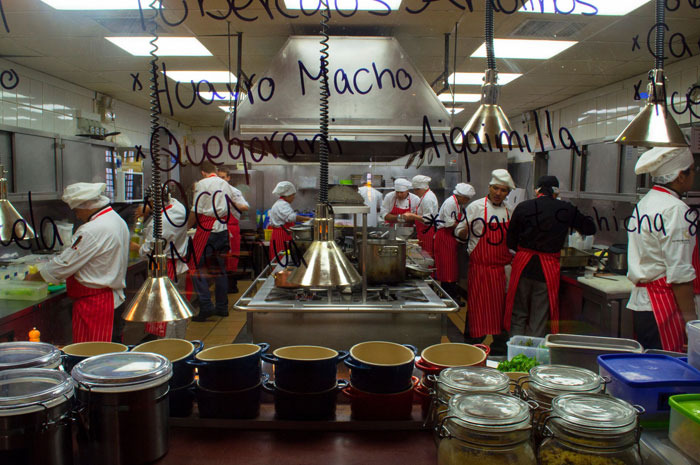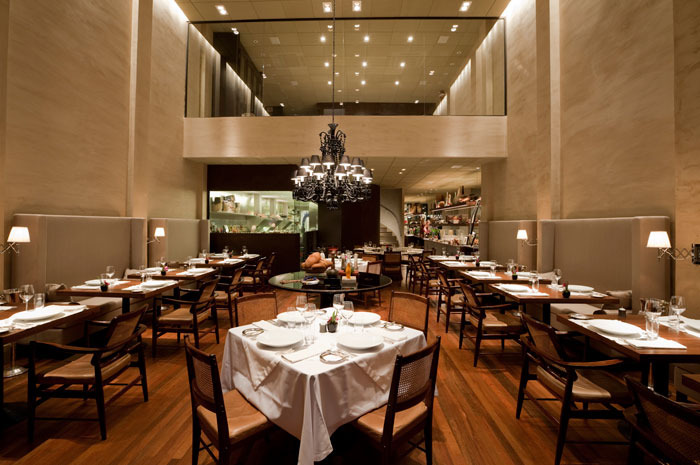10 Best Restaurants In South America
The 10 Best Restaurants in South America
These restaurants only represent a small portion of the culinary excellence that can be found throughout South America.
#10 Epice (São Paulo)
After working under some of the world's top chefs, including Gordon Ramsay in London and Pierre Gagnaire in Paris, Alberto Landgraf came home to Brazil with a vision: to give authentic Brazilian flavors a modernist makeover. The result is Epice, a cozy, warmly lit restaurant in São Paulo's stylish Jardim Paulista neighborhood where Landgraf practices some serious culinary magic in the kitchen. His tasting menu descriptions are minimalist — dried cassava and cured pork belly, quail egg and fresh seaweed, fried pork ear — but the dishes are intricately fashioned and often brilliant. Landgraf's sense of contrasting flavors and textures is superb, paving the way for Epice's creative dishes like scallops served with pickled carrot or cubes of cold carrot jelly served with luscious warm carrot purée. The à la carte menu ranges from the seemingly mundane elevated to the gastronomic (a plate of pumpkin gnocchi, sautéed pumpkin, pumpkin cream, Parmesan gelatin, and shimeji mushrooms) to the unlikely (grilled octopus with sweet corn, black garlic, broccoli, and vegetable broth) to the luxurious (foie gras with green corn, farmer's cheese, endive, and sorrel).
#9 Maní (São Paulo)
Both Daniel Redondo and Helena Rizzo, the husband-and-wife team at Maní, spent time at El Celler de Can Roca in Girona, Spain (Redondo was born in that city), hailed as "the best restaurant in the world," and the true heir to the culinary throne after the closing of elBulli. Redondo and Rizzo have made their own mark, using what they learned there and incorporating its Spanish culinary influences with those of Italy and Brazil. What to expect at Maní? Among many other delicious and unusual dishes, curried quinoa balls with celery jam; octopus sticks with confit potatoes and sweet paprika; cold soup of jabuticaba (a Brazilian "super-fruit") with cachaça-steamed crayfish, pickled cauliflower, and amburana nuts; lightly grilled tuna with quinoa, blackberry chutney, ginger foam, and shiso peppers; and sweet smoked eggplant with curdled goat milk, lime zest, orange flower jelly, pistachios, crispy shredded phyllo, and black sesame seed ice cream. There is also a skillfully designed nine-course tasting menu.
#8 Criterión (Bogotá, Colombia)
Brothers Mark and Jorge Rausch have brought a new level of gastronomy to the Colombian capital with their restaurants, most notably with this sophisticated entry. French (above all), American, Spanish, and Italian, and Latin American culinary influences blend superbly here. The menu at Criterión leads off with the restaurant's famous "terrine de foie gras PB&J" — duck liver with peanut butter, unripe grape preserves, caramelized banana, pecans, and puréed prunes. Crabmeat and guacamole are formed into a "tower" and graced with balsamic reduction, mango sauce, grapefruit sorbet, and parsnip chips. Langoustines are served in several guises (for instance, with porcini, asparagus sauce, and potatoes lyonnaise) and the steaks may be the best in Colombia. The Rauschs have also been pioneers in the cooking of lionfish, an invasive species from Southeast Asia that now crowds the Caribbean and the Gulf of Mexico, looking fearsome and devouring local species, but apparently tasting really good itself.
#7 Maido (Lima)
After years spent toiling in sushi kitchens in Japan, Peruvian-born chef Mitsuharu Tsumura has created a masterpiece at Maido, his Nikkei restaurant in the seaside district of Miraflores. Nikkei serves a century-old fusion of Japanese food with Peruvian characteristics, a style that began in Lima and draws inspiration from the decades of Japanese immigration to Peru. Maido, whose name is a greeting in Japanese, welcomes diners to its sushi counter seats and tables with an ever-changing omakase menu of nigiri, ceviche, and tiraditos, the contents of which are based on the daily catch and the chef's imagination.
#6 1884 Restaurante Francis Mallmann (Mendoza, Argentina)
Argentina's first winery restaurant, sharing a complex of old buildings (its name tells you its vintage) in the country's wine capital of Mendoza with Bodegas Escorihuela Gascón, is also celebrity chef Mallmann's showcase for his "seven fires" cooking skills. Employing open-fire grills, clay ovens, and other wood-fueled means, his chefs at 1884 turn out salt-crusted chicken, roast baby goat and suckling pig, and a beef rib, too big for its plate, that could be a dinosaur bone. Empanadas, grilled vegetables, grilled pacú (a fleshy river fish related to piranha), and other traditional Argentinean specialties fill out the menu. The candlelit patio and the dining room, with its wrought-iron accents and oversize nickel floor lamps with papyrus shades, evoke grand gaucho living of an earlier time.
#5 Central Restaurante (Lima)
Central Restaurante is slowly earning a major international culinary reputation, due to head chef Virgilio Martínez Véliz's creative take on classic Peruvian cuisine made with carefully sourced ingredients. Not only has Central ranked on the World's 50 Best list for two years in a row, but Central's sister restaurant, Lima, in London, also helmed by Martínez, recently became the first Peruvian restaurant to earn a Michelin star. The current Central tasting menu is conceptually based on ingredients characteristic of different elevations of Peru. From the sea to the mountains to the jungle, the menu progresses through novel ingredients not often experimented with in Peruvian dining. Dishes include scallops with loche squash (an unusual winter squash found only in Peru) and tumbo (tart "banana passionfruit"), frogfish with deepwater algae, and whole beef heart cooked and dehydrated, then shaved on top of kañiwa, a type of Peruvian quinoa, and served with milk. Martínez is poised to become a culinary giant.
#4 Sucre (Buenos Aires, Argentina)
Sucre is a sleek, modern, high-ceilinged restaurant with what could almost be a downtown Manhattan vibe, but the food is fresh, deftly fashioned Argentinean fare. Anyone who thinks that Buenos Aires is mostly about meat should sample this restaurant's octopus tiradito with crunchy corn, ají mirasol, and oyster sauce, or black rice with grilled langoustines, leeks, and wild mushrooms. Of course, there's meat aplenty, too, from the usual Argentinean cuts of steak, grilled perfectly, to specialties like lamb stew with harissa and toasted cauliflower and wild duck with cherries and purée of Turkish lentils. A simple but unforgettable dessert is the housemade goat cheese cheesecake with black figs, dates, and hazelnuts
#3 La Mar (Lima)
Gastón Acurio's Peruvian cebichería franchise began its climb to international fame at this, the original La Mar. The spicy, refreshing ceviches and the mouth-puckering pisco sour (made with pisco brandy, fresh lime juice, simple syrup, egg white, and Angostura bitters) are legendary here. These signature treats have been replicated with varying success at franchise locations in Bogotá, São Paolo, Miami, and San Francisco (a New York outpost failed). The seafood-heavy menu also includes a selection of whole fish (most of the time purchased directly from fishermen off the Lima coastline), Peruvian soups, and rice- and pasta-based seafood dishes.
#2 Astrid & Gastón (Lima)
With the notable achievement of four consecutive years on the World's 50 Best Restaurants list, Astrid & Gastón is a pioneer of Lima's blossoming culinary scene, and a major reason for the international recognition of Peruvian food. Though the restaurant's founder, Gastón Acurio, retired from active management of the place last year, he and his wife, Astrid Gutsche, continue to oversee a fine-dining (and occasionally casual-dining) empire stretching from Madrid to San Francisco to São Paulo (including an impressive seven restaurants in Lima alone and several more in development). The menus at Acurio's Lima original comprise experimental dishes, in which traditional items are transformed into new and different offerings. One of the standout dishes is the famous cuy pekinés, in which guinea pig is cooked in the Peking duck style and served with rocoto chiles and a purple corn crêpe. Desserts follow the same creative cooking style, combining local Peruvian fruits with syrups, cakes, and ice cream for creations like lúcuma (a tropical fruit) ice cream served with raspberry compote and crème brûlée foam.
#1 D.O.M. (São Paulo)
The amiable, heavily tattooed Brazilian chef Alex Atala has galvanized his country's food scene and is one of the most original and influential chefs in South America. His showplace, D.O.M. — the initials stand for Dominus Optimo Maximo, which might be translated from the Latin approximately as Lord Almighty (in the religious, not the exclamatory, sense) — is a small place, with 50 seats, high ceilings, cool beige walls, bare wood tables set with linen placemats, and a Philippe Starck chandelier. The food Atala cooks is unmistakably Brazilian, though created through the filter of a classical culinary education and wide experience of the world. Chibé is a kind of manioc flour mush eaten by native tribes in the Amazon; Atala reinvents it as a tabbouleh-like salad flavored with a dozen Amazonian herbs and blossoms, each with a different taste. Lightly toasted black rice mixed with bits of broccoli, celery, corn, scallions, and parsnips is moistened with Brazil nut milk. Salt cod — that favored fish of Brazil's Portuguese colonizers — is sauced with a "mayonnaise" made with milk and cabbage. Hearts of palm are turned into fettuccine, flavored Italian-style with butter, Parmigiano, sage, and popcorn powder, or served as "carpaccio" with scallops and basil oil. Skate is combined with peanut foam and smoked mandioquinha, or "little cassava," in fact an ancient Andean root (Arracacia xanthorrhiza) sometimes said to resemble a cross between carrot and celery. Desserts might include a Brazil nut tart with whiskey ice cream, chocolate, salt, and pepper, and a few leaves of a very popular green here: arugula. It is safe to say you won't find food like this anywhere else in the world.
